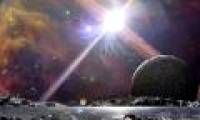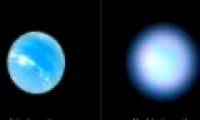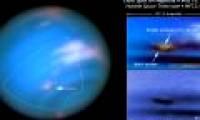
Outside our Earth there exist many planets with strange weather patterns that seem to be only in sci-fi films.

American scientists have successfully created super ion tape for the first time in the laboratory. The findings were published in February in the journal Nature Physics, according

The Very Large Telescope (VLT) of the Southern European Observatory (ESO) has received the first light rays after activating the new adaptive optical mode.

NASA's Hubble telescope has the opportunity to look over the surface of Neptune and discover a giant oval storm.

The object with a diameter of nearly 200 km named Niku (Rebel) moves in the opposite direction to other celestial bodies in the solar system.

Russian scientists believe that under Uranus, Neptune and orbiting satellites may contain Hitler acid, a special material mix that does not exist on Earth.

Research by British scientists shows that if it really exists, the 9th planet could cause a terrible chaos for the Solar System once the Sun dies.

A team of astronomers, including researchers from the University of British Columbia (Canada), have discovered a new dwarf planet farther away than Neptune in the Solar System.

The first images of planets in the solar system are not always clear and sharp. But these are important imprints in the early period of human conquest of the universe.

Voyager 2, the interplanetary unmanned cruise ship, was launched on August 20, 1977 and sent countless images of planets in the universe.
 Outside our Earth there exist many planets with strange weather patterns that seem to be only in sci-fi films.
Outside our Earth there exist many planets with strange weather patterns that seem to be only in sci-fi films. American scientists have successfully created super ion tape for the first time in the laboratory. The findings were published in February in the journal Nature Physics, according
American scientists have successfully created super ion tape for the first time in the laboratory. The findings were published in February in the journal Nature Physics, according The Very Large Telescope (VLT) of the Southern European Observatory (ESO) has received the first light rays after activating the new adaptive optical mode.
The Very Large Telescope (VLT) of the Southern European Observatory (ESO) has received the first light rays after activating the new adaptive optical mode. NASA's Hubble telescope has the opportunity to look over the surface of Neptune and discover a giant oval storm.
NASA's Hubble telescope has the opportunity to look over the surface of Neptune and discover a giant oval storm. The object with a diameter of nearly 200 km named Niku (Rebel) moves in the opposite direction to other celestial bodies in the solar system.
The object with a diameter of nearly 200 km named Niku (Rebel) moves in the opposite direction to other celestial bodies in the solar system. Russian scientists believe that under Uranus, Neptune and orbiting satellites may contain Hitler acid, a special material mix that does not exist on Earth.
Russian scientists believe that under Uranus, Neptune and orbiting satellites may contain Hitler acid, a special material mix that does not exist on Earth. Research by British scientists shows that if it really exists, the 9th planet could cause a terrible chaos for the Solar System once the Sun dies.
Research by British scientists shows that if it really exists, the 9th planet could cause a terrible chaos for the Solar System once the Sun dies. A team of astronomers, including researchers from the University of British Columbia (Canada), have discovered a new dwarf planet farther away than Neptune in the Solar System.
A team of astronomers, including researchers from the University of British Columbia (Canada), have discovered a new dwarf planet farther away than Neptune in the Solar System. The first images of planets in the solar system are not always clear and sharp. But these are important imprints in the early period of human conquest of the universe.
The first images of planets in the solar system are not always clear and sharp. But these are important imprints in the early period of human conquest of the universe. Voyager 2, the interplanetary unmanned cruise ship, was launched on August 20, 1977 and sent countless images of planets in the universe.
Voyager 2, the interplanetary unmanned cruise ship, was launched on August 20, 1977 and sent countless images of planets in the universe.




 Do signals from extraterrestrial civilizations detected by Sky Eye really exist?
Do signals from extraterrestrial civilizations detected by Sky Eye really exist? 'City without air conditioning' in China: People don't know what heat is!
'City without air conditioning' in China: People don't know what heat is! The element of the sun god is giving scientists a headache
The element of the sun god is giving scientists a headache Unique Village: Roofs Become Roads for Residents!
Unique Village: Roofs Become Roads for Residents! Top 7 strange psychological effects of the brain that we all have without knowing
Top 7 strange psychological effects of the brain that we all have without knowing Which is the most terrifying bedroom elixir in Chinese history?
Which is the most terrifying bedroom elixir in Chinese history? Earth's core may start rotating in reverse
Earth's core may start rotating in reverse A day in Japan can be up to 30 hours long, does this country live in a different 'timeline'?
A day in Japan can be up to 30 hours long, does this country live in a different 'timeline'?